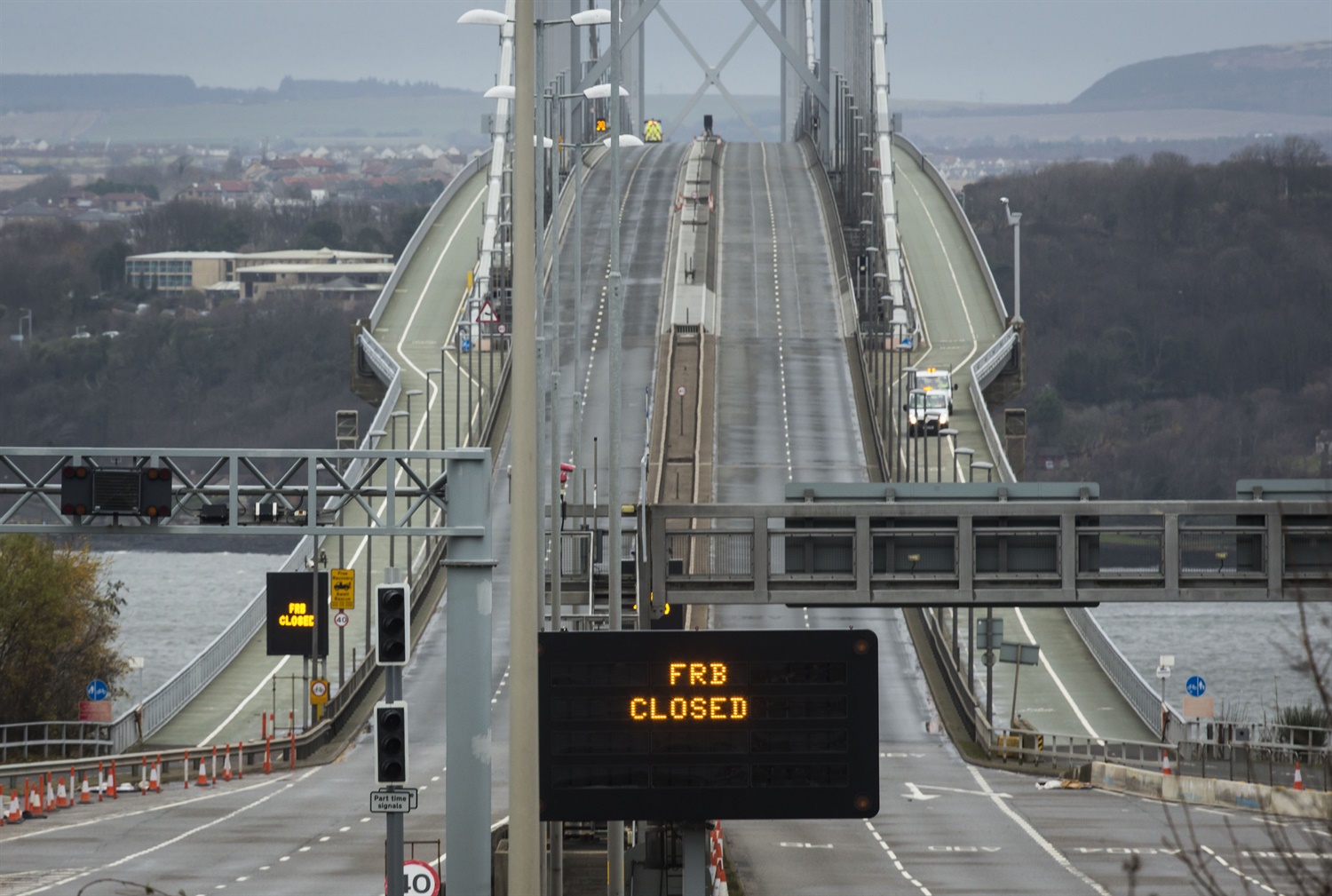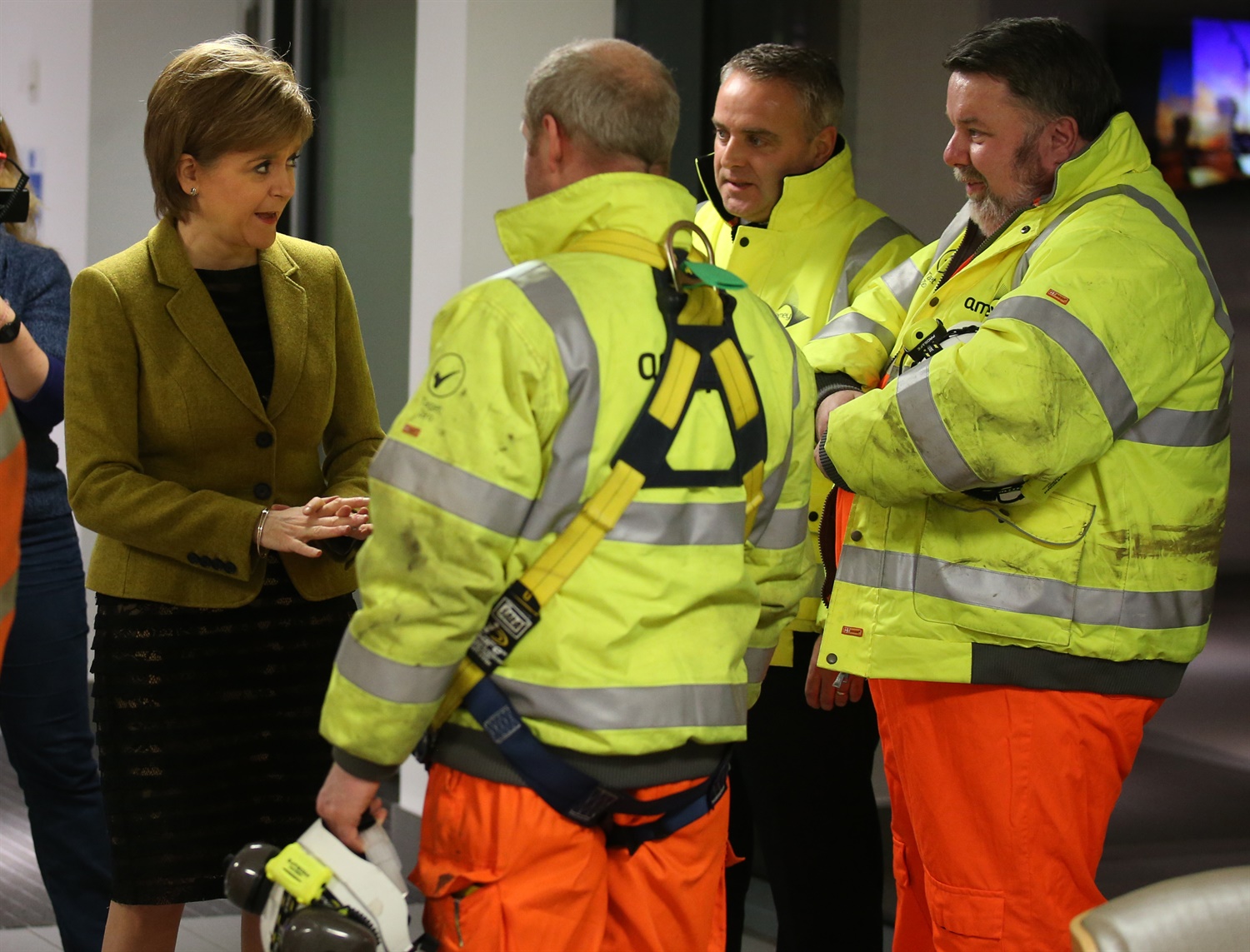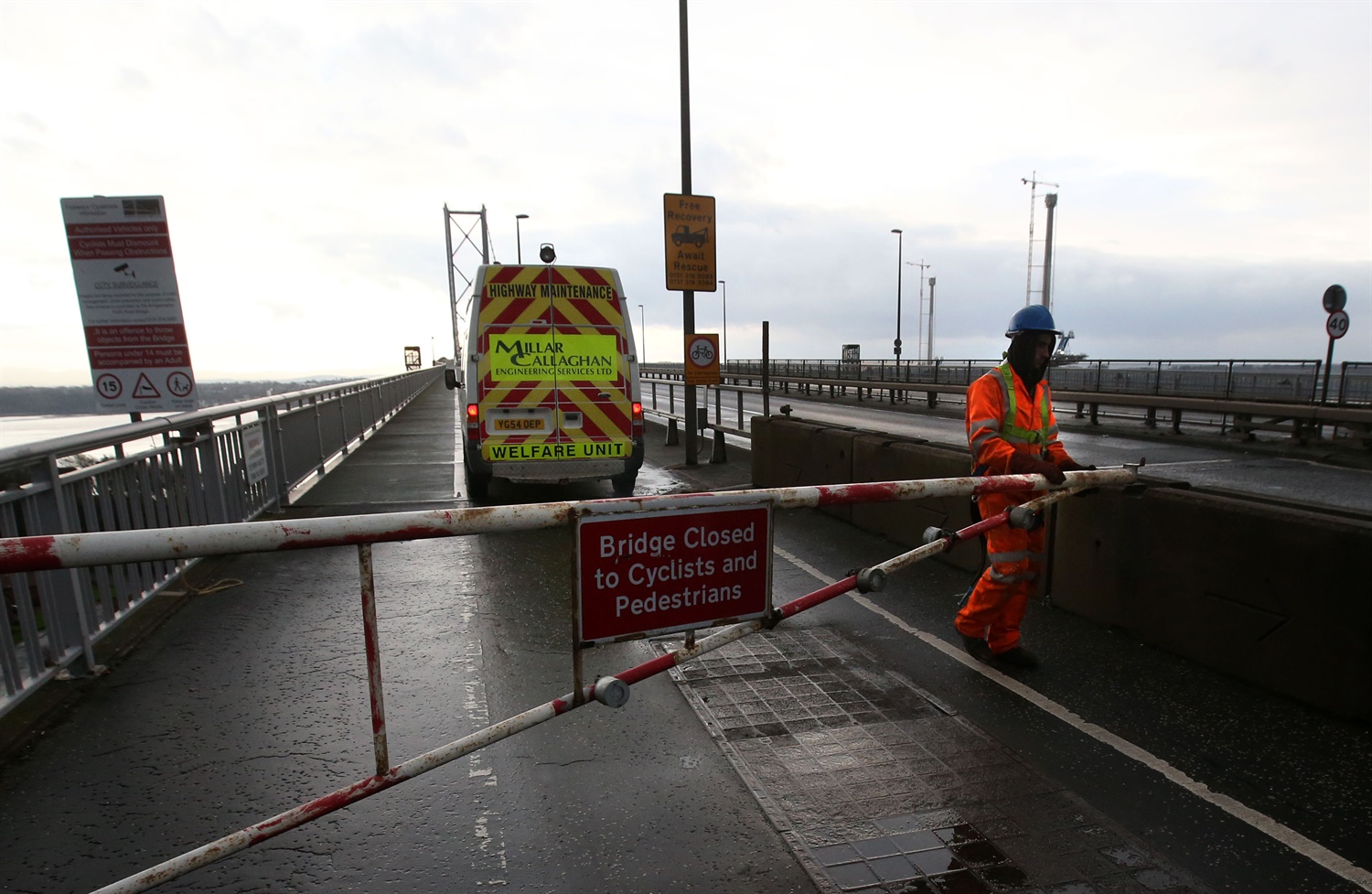08.12.15
Scotland confident about Forth Road Bridge plan as ScotRail scrambles for extra trains
Scottish transport minister Derek MacKay is set to make a statement to Parliament today (8 December) after the Forth Road Bridge was closed due to defective steelwork, triggering gridlock in parts of the country’s rail network and forcing ScotRail to scramble for available trains elsewhere in the UK.
The bridge was shut down on 4 December by the Scottish Government Resilience Committee after engineers discovered a fault in the bridge steelwork on 1 December.
According to Traffic Scotland, there was a failure of the inner link support beam to the north-east tower truss end link, after which the government shut down the southbound carriageway.
But two days later, after robust structural inspection, engineers identified significant overstress and a likely crack in the remaining outer link support beam. The bridge will remain closed until after the new year.
At the time, MacKay said: “Every effort is being made to open the bridge as quickly as possible, but safety is the main priority. However, these works are weather-dependent, given the height and location of the bridge. We are aware of the potential economic impact, for strategic traffic in the east of Scotland and on people living in local communities.
“This is an unprecedented challenge in the maintenance of the Forth Road Bridge. On balance following advice from engineers and independent experts, the full closure is essential for the safety of the travelling public and to prevent further damage to the structure of the bridge.”
Although bridge operators from Amey put an inspection team in place to look into the defects, which seems to have occurred in only the past few weeks, the Scottish Government had to order thousands of additional transport services to mitigate the impact.

Extra services and economic impact
Saying the closure was a “matter of national significance”, ScotRail has so far added 6,500 more seats on trains to and from Fife each weekday.
This was done by bringing in extra trains from other parts of the UK and taking trains from their refurbishment programme that could be removed “without holding up the improvements” – such as wi-fi and power sockets.
The operator also looked at other parts of the rail network to identify services that could be shuffled around to ease the congestion in Fife, although it claims that was the last thing it did in order to avoid impacting services elsewhere.
Train services into Glasgow Queen St, Dundee, Kirkcaldy and Edinburgh were also affected by the road bridge’s closure.
Rail union RMT, however, said the said the sudden closure of the bridge served to expose a “severe shortage of capacity” on ScotRail.
The union’s general secretary, Mick Cash, said: “The sudden and enforced closure of the Forth [Road] Bridge has seriously exposed the chronic lack of spare rolling stock and capacity on ScotRail, with the company now advising people not to use their services and to stay at home.
“It is a ludicrous state of affairs when the main rail service is tipped into complete meltdown because of passengers seeking an alternative way of completing their journey. This situation calls for an immediate review of the capacity and fleet stock on ScotRail so that passengers are not confronted with this kind of chaotic situation in the future.”
As well as introducing more rail and bus services, Scottish ministers have asked the UK government to relax the HGV drivers’ hourly limits as a result of closures, which could be introduced this week.
The country’s deputy first minister, John Swinney, will chair a meeting with business leaders and other representatives to discuss what more can be done to support the economy during the bridge’s closure.
 Left to right: First minister Nicola Sturgeon, director of Amey Gordon Allen and Forth Road Bridge senior engineers talk as Sturgeon arrives at the Traffoc Scotland control room
Left to right: First minister Nicola Sturgeon, director of Amey Gordon Allen and Forth Road Bridge senior engineers talk as Sturgeon arrives at the Traffoc Scotland control room
Despite the turmoil, Scotland’s government said the investigation and testing works are progressing well, with repair works starting next week once the design has been finalised and an access platform has been put in place.
Speaking from the Traffic Scotland control centre this morning after overseeing operations, MacKay said: “I believe our comprehensive travel plan has been effective, but will be subject to constant monitoring, review and adaptation. We recognise many people are travelling earlier, therefore an early morning train will be added to the timetable by ScotRail, along with 8,000 extra seats.
“I appreciate many commuters and businesses are facing longer journeys, queues, disruption and delays, and are generally being inconvenienced by the necessary closure. I have to stress that without this closure at this time, it’s highly likely we would need to eventually close the bridge for a much longer period.”
Traffic Scotland has also created a dedicated website to help passengers find essential travel information until the bridge is reopened at an unspecified date in the new year.
It is estimated that around 70,000 vehicles using the 51-year-old bridge every day, meaning there were 11-mile rush hour tailbacks on Friday after the first full day of its closure.
A £1.4bn replacement road bridge, Queensferry Crossing, is being built alongside the Forth Road Bridge and is expected to open later in 2016.

(All images c. Andrew Milligan/PA Images)